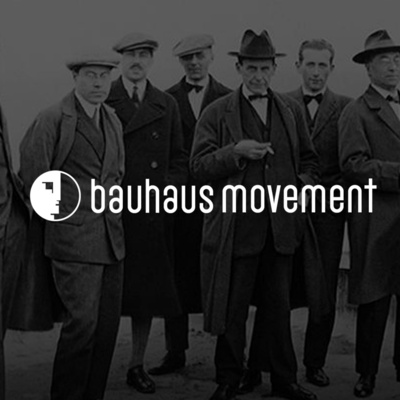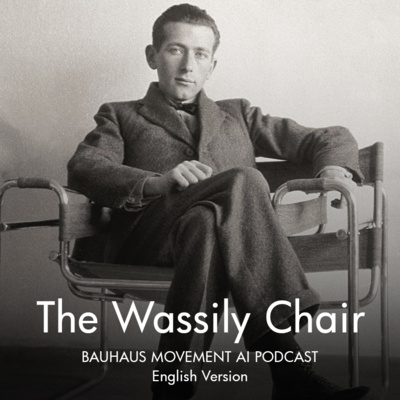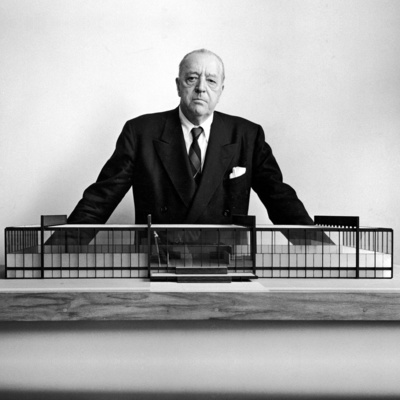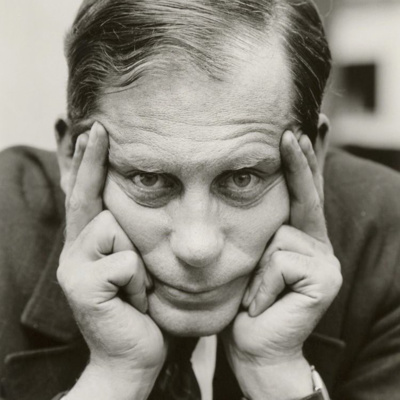
Bauhaus Movement Podcast
By Bauhaus Movement


The Wassily Chair

Bauhaus Women - The beginning
The beginnings of the Bauhaus: How were women treated in the early days of the Bauhaus and what obstacles did they have to overcome in order to work as artists and designers?
In this episode of the "Women of Bauhaus" podcast, we discuss the works of Bauhaus women and their role in art history. We delve into the contributions of notable female artists like Anni Albers, Marianne Brandt, and Gunta Stölzl, and examine the challenges and limitations women faced at Bauhaus. We also explore the influence of Bauhaus women on the feminist movement and how their work continues to inspire contemporary female artists. Join us as we honor their legacy and advocate for equal opportunities and recognition for women in the art world.
We explore the history of the Bauhaus movement through the lens of artificial intelligence. Our content has been intentionally generated by AI and focuses solely on the factual aspects of the Bauhaus movement. We aim to provide educational and informative content about the key figures, events, and innovations of this influential movement. Join us as we delve into the history of Bauhaus and discover new insights through the use of AI.

Wassily Kandinsky (English)
Welcome to today's episode of our AI-generated podcast, where we explore the fascinating world of Wassily Kandinsky and his time at the Bauhaus. We will also discuss his friendship with Paul Klee and some of his most famous works. Let our artificial intelligence guide you on an informative and inspiring journey into the world of art.

Wassily Kandinsky (German)
Willkommen zur heutigen Episode unseres KI-generierten Podcasts, in der wir die faszinierende Welt von Wassily Kandinsky und seine Zeit am Bauhaus erkunden. Wir werden auch seine Freundschaft zu Paul Klee und einige seiner bekanntesten Werke diskutieren. Lassen Sie sich von unserer künstlichen Intelligenz durch eine informative und inspirierende Reise in die Welt der Kunst führen.

Discover the Bauhaus
Modern design is all about simplicity and functionality and can be found in many products we're using on a daily basis. Learn how the Bauhaus Movement influenced design history with its emphasis on theory and practice as taught by the masters.

Architecture as Language - Ludwig Mies van der Rohe
Ludwig Mies van der Rohe was a German-born American architect whose rectilinear forms, crafted in elegant simplicity, made him among the most prominent and influential architects of the twentieth century. He was initiated into architecture through masonry, stone carving, stucco decoration, and furniture design before working as an architect in Peter Behrens’ office.
Mies Career in Europe
In 1905, at the age of 19, Mies went to work for an architect in Berlin, but he soon left his job to become an apprentice with Bruno Paul, a leading furniture designer who worked in the Art Nouveau style of the period. Two years later, he received his first commission, a traditional suburban house. Its perfect execution impressed Peter Behrens, who, at the time, was Germany’s most progressive architect and offered the 21-year-old Mies a job in his office, where, at about the same time, Walter Gropius and Le Corbusier were also starting.
Perhaps Mies’s most famous executed project of the interwar period in Europe was the German Pavilion (also known as the Barcelona Pavilion). The German government commissioned for the 1929 International Exposition at Barcelona (demolished 1930; reconstructed 1986). It exhibited a sequence of marvelous spaces on a 175- by 56-foot (53.6- by 17-metre) travertine platform, partly under a thin roof and partly outdoors, supported by chromed steel columns. The spaces were defined by walls of honey-colored onyx, green Tinian marble, and frosted glass and contained nothing but a pool, in which stood a sculptural nude and a few of the chairs Mies had designed for the pavilion. These cantilevered steel chairs, known as Barcelona chairs, became an instant classic of 20th-century furniture design.
In 1930 Mies was appointed director of the Bauhaus, which had moved from Weimar to Dessau in 1925. When the Nazis closed the school in 1933, Mies tried for a few months to continue it in Berlin. But the modern design was as hopeless a cause in Hitler’s totalitarian state as was political freedom. Mies announced the end of the Bauhaus in Berlin late in 1933 before the Nazis could close it.

Ursula von der Leyen - New European Bauhaus
Statement by President Ursula von der Leyen on the occasion of the launch of the design phase of the New European Bauhaus.

Walter Gropius - Gespräch mit Friedrich Luft (1965)
Dieses Mal unterhält sich Friedrich Luft in seiner Sendung aus dem Jahr 1965 mit dem berühmten Architekten und Bauhaus-Gründer Walter Gropius (1883-1969), der nach Angriffen der Nationalsozialisten auf das Bauhaus nach England und später in die USA emigrierte. Er erzählt über die immer schon international orientierte Familiengeschichte, seine ersten Aufträge als junger Architekt, die Gründung & Grundidee des Bauhauses und seine Zeit als Architekt in den USA.